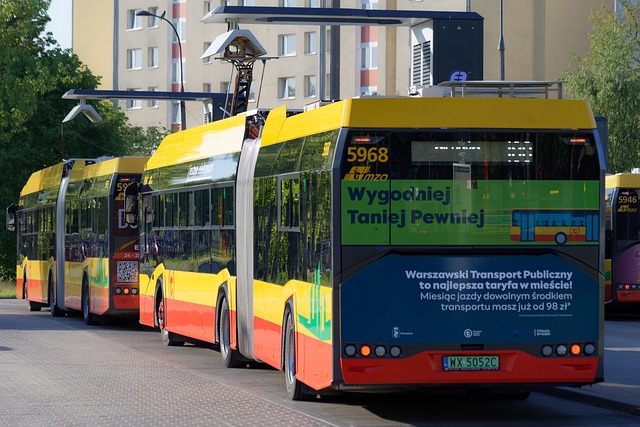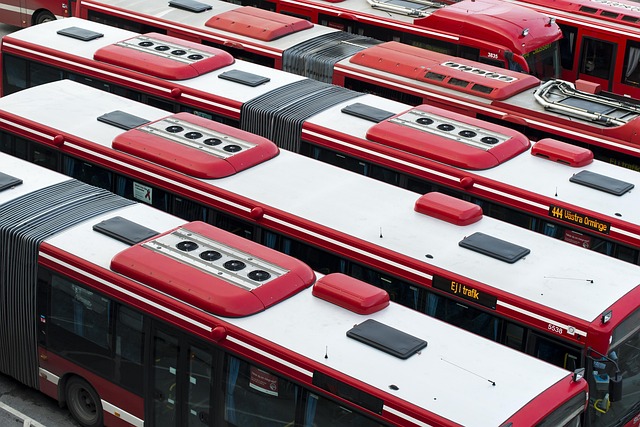Bus driver training covers vehicle systems, safety protocols, and passenger management for both diesel and electric buses. Jurisdictions set minimum training hours and skills, blending theory with practical exercises. Select Buses from diverse types ensure trainees gain relevant skills for urban navigation, customer service, and emergency handling. Advanced simulations and real-world practice enhance training effectiveness. Safety focuses on emergency protocols, child transport, and vehicle control in challenging conditions. Continuous support, refresher courses, and modern technology improve training programs for efficient bus fleet management.
“Effective bus driver training is pivotal in ensuring safe and efficient public transportation. This comprehensive guide delves into the essential components of training programs, from understanding regulatory requirements to practical skills development. We explore the importance of choosing suitable buses for training, emphasizing ‘select buses’ as a strategic decision. Key topics include teaching navigation, safety protocols, emergency preparedness, and continuous evaluation methods. By covering these aspects, we aim to highlight best practices for comprehensive driver training.”
- Understanding Bus Driver Training Requirements
- Choosing the Right Buses for Training Purposes
- Essential Skills to Teach New Drivers
- Simulation and Real-World Driving Practice
- Safety Measures and Emergency Protocols
- Ongoing Support and Evaluation for Effective Training
Understanding Bus Driver Training Requirements

Understanding Bus Driver Training Requirements involves comprehending a multifaceted process designed to ensure safe and efficient operation of buses, both conventional diesel models and emerging electric bus technologies. This includes mastering vehicle systems, safety protocols, passenger management, and navigation not just for local routes but also for long distance bus travel. Each jurisdiction has specific regulations dictating the minimum training hours and skills needed, reflecting the complexity of managing a vehicle capable of transporting dozens of passengers.
The training process often encompasses a mix of theoretical knowledge and practical exercises. Trainees learn about vehicle maintenance, emergency procedures, and the latest digital bus information displays. They also practice maneuvers in controlled environments before transitioning to real-world scenarios. Select Buses, from local transit operators to national bus tour operators, all require drivers to be adept in navigating busy urban centers, understanding diverse passenger needs, and adhering to strict schedules.
Choosing the Right Buses for Training Purposes

When it comes to bus driver training, selecting the right vehicles is a strategic decision that can significantly impact the overall learning experience. It’s essential to choose buses that represent the latest models and technologies used in public transport, ensuring trainees are equipped with relevant skills for real-world applications. The ideal fleet should include various types of buses, such as city buses, school buses, or even shuttle buses, depending on the training objectives. This diversity allows instructors to offer a comprehensive range of training scenarios, from urban navigation to specialized routes.
The process of selecting buses involves careful consideration of factors like age, condition, and features. Reputable dealers offering used buses for sale can provide access to vehicles that are cost-effective and suitable for training purposes. Moreover, evaluating the bus service contracts and fleet management practices ensures that the chosen buses align with safety standards and maintenance protocols, creating a safe and reliable learning environment.
Essential Skills to Teach New Drivers

Teaching new bus drivers is a multifaceted process that goes beyond simply familiarizing them with the vehicle’s controls. It involves imparting a range of essential skills necessary for safe and efficient operation, particularly when selecting buses for specific purposes like city tour buses or sightseeing buses. These include mastering defensive driving techniques to navigate bustling urban environments and ensuring smooth rides for passengers in accessible bus stops.
Additionally, training should focus on customer service, as drivers often serve as the public’s point of contact. Effective communication skills, patience, and the ability to handle challenging situations are crucial. Moreover, understanding local traffic regulations and routes is vital for driving sightseeing buses or city tour buses, allowing drivers to offer informative commentary and enhance passenger experiences.
Simulation and Real-World Driving Practice

The effectiveness of bus driver training lies not only in theoretical knowledge but also in practical skills development. Simulation technologies offer a safe and controlled environment for trainees to familiarize themselves with various driving scenarios, from navigating busy city streets to handling emergency situations. These simulations, often featuring advanced virtual reality (VR) or high-fidelity computer models, allow drivers-in-training to experience realistic challenges without risking personal safety or public disruption.
Complementing simulation training, real-world driving practice is indispensable. Trainees get behind the wheel of select buses, gradually transitioning from basic maneuvers to more complex routes and conditions. This hands-on experience is crucial for mastering not just technical skills but also situational awareness, passenger interaction, and adherence to traffic regulations. Moreover, it prepares them for unexpected events and promotes safe driving habits that contribute to efficient bus fleet management. For optimal learning, trainees should be exposed to diverse vehicle types, catering to the varied needs of public transportation systems and ensuring they’re equipped to handle any situation that arises on the road.
Safety Measures and Emergency Protocols

Safety is paramount when operating a Select Bus, especially considering the diverse nature of passenger groups on bus tours to mountainous regions or other no-park zones. Comprehensive training should include in-depth understanding and practical demonstrations of emergency protocols. Drivers must be adept at managing sudden stops, evasive maneuvers, and handling panicked passengers, all while maintaining control of the vehicle.
Additionally, child transport safety is a critical aspect that requires specific attention. Trainees should learn how to secure children’s seats properly, manage unruly behavior, and respond swiftly in case of emergencies involving young passengers. These protocols ensure not just the safety of every passenger but also contribute to a seamless and enjoyable bus tour experience, whether navigating mountainous terrain or adhering to strict no-park zones.
Ongoing Support and Evaluation for Effective Training

Effective bus driver training requires ongoing support and evaluation to ensure its success. Regular refresher courses and workshops can help drivers stay updated with new regulations, safety protocols, and best practices in the industry. This continuous learning approach is crucial for maintaining high standards of driving skills and passenger service.
Additionally, utilizing smart bus stations and modern technology can enhance training programs. These innovations include advanced simulation tools, digital training modules, and real-time data analytics to track driver performance. By incorporating these resources, training institutions can offer more dynamic and comprehensive instruction, focusing on areas like proper bus drop-off points, efficient bus maintenance and repair, and optimized bus stop design.
Comprehensive bus driver training is essential for ensuring safe and efficient public transportation. By adhering to strict regulations, selecting appropriate buses for training, and focusing on both theoretical knowledge and hands-on practice, training programs can equip new drivers with the skills needed to navigate various road conditions. Continuous support and evaluation further reinforce learning, making our roads safer for everyone. When choosing buses for training, consider those that represent the latest technologies and designs, allowing aspiring drivers to gain experience with modern fleet options.
